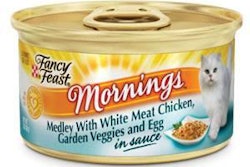If you rely on data from the US Department of Agriculture on grain crops and prices -- or data on other petfood ingredients -- you may have cause for concern. Possible US federal budget cuts may affect the agency's ability to continue to provide such timely and accurate data, according to Joe Prusacki, director of the statistics division at USDA's National Agricultural Statistics Service (NASS).
Speaking during a webinar hosted by the Farm Foundation (as reported on AgWired.com), Prusacki said that while US Congress' joint budget committee actually increased the amount of money allotted to NASS, it was less than what the division asked for because of what its leaders believe is needed to produce the number of reports to serve producers, along with the number of inputs and sample sizes necessary to help ensure quality and accuracy.
It's not just producers who use this data. In another webinar in the Farm Foundation series, Paul Hughes, commodity risk manager for Nestle Purina PetCare, said this information is very important to petfood and other manufacturers such as his company -- especially because the data is unbiased. "USDA is the global unbiased umpire of the grains and oilseeds markets," he said.
USDA data level the playing field for all producers and manufacturers, especially smaller ones, Hughes added, expressing concern that if USDA is not able to produce the same number or quality of reports equally to all in the market, the information might be available only from parties with vested interests. For example, Indonesian palm oil is the most consumed vegetable oil in the world, he said, with the country producing half the global supply -- yet it shares no data on production stocks of consumption.
With the market for so many ingredients (particularly grains) being so volatile, access to timely, accurate, unbiased data is even more critical. For example, just a few weeks ago, a USDA economist said the US corn crop might set a new record this year. But then excessive heat and drought hit the US Midwest, which may affect the size of the crop, thus affecting supply and prices. Which in turn could affect wheat prices.
The good news in this situation is that Prusacki said no matter what the NASS budget ends up being, his division will continue issuing six core reports, at least four of which may be useful to petfood manufacturers: prospective plantings/acreage, grain stocks, crop production and monthly prices. (The other two core reports are a quarterly hogs and pigs survey and a monthly cattle on feed survey.)
How does this affect you, if at all -- and what other petfood-related market data would you find useful on a regular basis? PetfoodIndustry.com will be developing a Market Data page within the next six months or so; please tell us what type of data you would like to see included and updated on that page. We cannot promise we will be able to answer all requests, but we will certainly try!
To list petfood market data you find helpful, simply fill in the comments box below. (You have to register to the site and be signed in to comment; registration to PetfoodIndustry.com is free.) Thank you for your input.
















